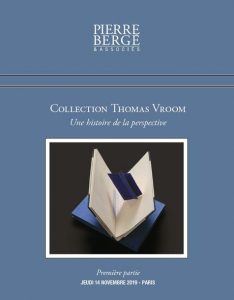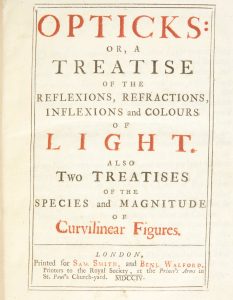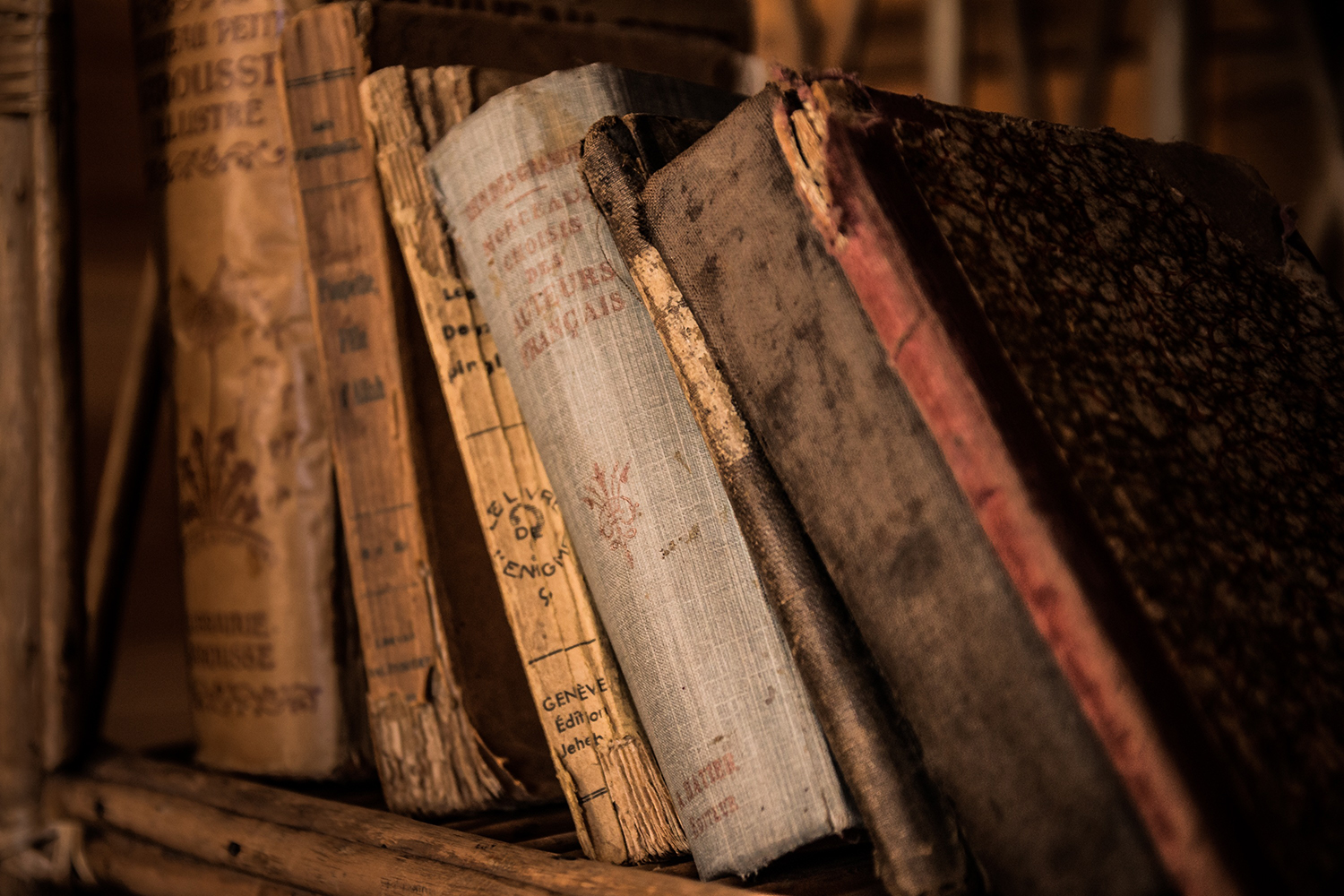Description
Light. Also two treatises of the species and magnitude of curvilinear figures. Londres, imprimé pour Sam. Smith & Benj. Walford, 1704. In-4 (243 x 190 mm) de 2 ff.n.ch. (titre et introduction), 144 pp., 211 pp., 19 planches dépliantes gravées sur cuivre; veau moucheté, plats ornés d'encadrements à froid, fleurons d'angle, dos à nerfs, tranches mouchetées (reliure anglaise de l' époque).
Babson, 132; Dibner, Heralds of Science, 148; Horblit, 79b (cet exemplaire); Norman, 1588; Sparrow, Milestones of Science, 150; PMM, 172; Wallis 174; Burchett, p. 17-18; Becker, 172 (“The classical formulation and first full presentation of Newton's corpuscular or emission theory of light”); Vitry, 614.
Édition originale, exemplaire de premier tirage, avec le titre imprimé en rouge et noir dans un encadrement de filets et sans le nom de l'auteur (l'avertissement porte seulement ses initiales).
Le dernier traité fondamental de Newton dans lequel il établit, s'opposant aux théories de ses contemporains, que la réfraction “loin d' être le processus qui - séparant les rayons hétérogènes qui composent la lumière blanche- en rend perceptibles les couleurs respectives” (Revue Lumière, Regards sur l'Optique de Newton, p. 107).
“Newton avait conclu de ses recherches sur la lumière de 1666 que les couleurs «ne sont pas des qualifications de la lumière provoquées par la réflexion ou la réfraction sur les corps naturels», comme on le croyait jusqu'alors, mais «des propriétés originelles et spécifiques», différentes pour les différents rayons.
Il proposa une explication de la distribution des couleurs de l'arc-en-ciel et des positions respectives des différents arcs par rapport à l'arc primaire, complétant ainsi la théorie qu'en avait donné Descartes en suivant le trajet de la lumière dans une goutte de pluie en suspension.
Il étudia en détail les phénomènes d' interférence et en particulier les propriétés des anneaux irisés (baptisés après lui «de Newton») produits par le passage de la lumière à travers une mince couche d'air située entre deux lamelles de verre, dont Hooke avait donné une première approche qualitative.
Newton proposa une analogie entre les sept notes fondamentales de la gamme musicale et les couleurs primaires (pour cette raison, il en recense sept, ajoutant l'orange et l' indigo), et incorpora à sa théorie la périodicité de la lumière, remarquée à partir de ses observations sur les anneaux formés par des lames minces, associant chaque couleur à une longueur d'onde.” (Michel Paty, Encyclopedia Universalis).
On trouve à la suite du traité consacré à l'optique, deux textes prouvant l'antériorité des découvertes de Newton sur celles de Leibniz concernant le calcul différentiel.
“Appended to the Opticks are two highly important mathematical treatises which are not present in later edition. These treatises constitute Newton's first published works on calculus” (Becker).
“The famous prism experiment of Newton with the refraction of sunlight occurred in 1660 (the research was completed by 1666, announced in 1672, and published in 1704). They, Boyle and Newton, ushered in the beginning of the science of colour. Color identification and quantification rapidly became important adjuncts to color use and, along with symbolism, philosophy and beauty, added another branch of vocabulary by which to assess the meaning of color harmony” (Kenneth Burchett).
“Unlike most of Newton's works, Opticks was originally published in English, with the Latin version following in 1706. The work summarized Newton's discoveries and theories concerning light and color: the spectrum of the sunlight, the degrees of refraction associated with different colors, the color circle (the first in the history of color theory), the invention of the reflecting telescope; the first workable theory of the rainbow, and experiments on what would later be called “interference effects” in conjunction with Newton's rings” (Norman).
Très bon exemplaire non lavé et complet de ses 19 planches gravées; dos habilement refait avec les anciennes gardes conservées; petite auréole dans le coin intérieur vers la fin.
Provenance: Harrison D. Horblit (ex-libris).
First edition, first issue, of Newton's revolutionary work on light and colour, the title printed in red and black within a border, and the imprint without the author's name, the two treatises on calculus at end.
Opticks contains Newton's account of his discoveries concerning light, from his first published paper in 1672 onward, including his work on the spectrum of sunlight, the degrees of refraction associated with different colours, the colour circle, the rainbow, “Newton's rings”, and his invention of the reflecting telescope. “Newton's Opticks did for light what his Principia had done for gravitation, namely, placed it on a scientific basis” (Babson, p.66).




